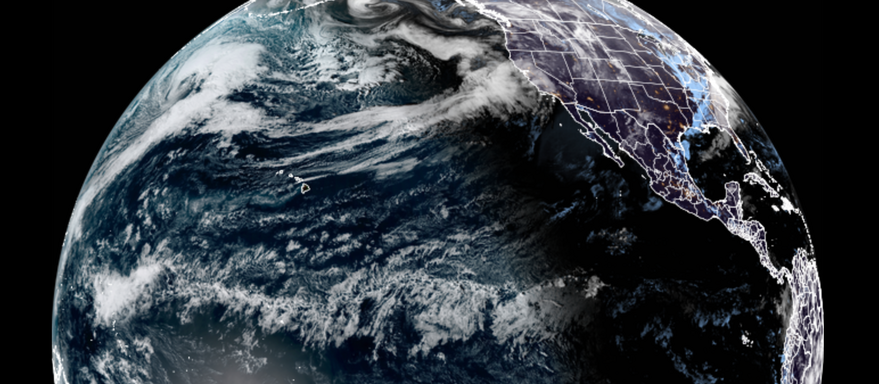10.01.2023

True color image from the Advanced Baseline Imager on the new GOES West, previously known as GOES-18 and GOES-T, captured on Jan. 8, 2023. Credit: NOAA
DENVER – The National Oceanic and Atmospheric Administration declared the newest satellite in its geostationary fleet, GOES-18, operational Jan. 4 and designated it GOES West.
With that designation, the satellite launched in March took over for GOES-17 as one of NOAA’s two primary geostationary satellites. GOES West observes weather and climate conditions over the western United States, including Alaska and Hawaii, Mexico, Central America and the Pacific Ocean.
GOES-17 will move to an orbit over the central United States to serve as a backup for GOES East and GOES West.
Usually, GOES satellites spend about six months in their initial geostationary orbital slots before moving into position as GOES East or GOES West. For GOES-18, NOAA began moving the satellite in May, two months after launch, and quickly began sharing data from GOES-18 instruments with the National Weather Service and other data users as soon as each instrument was calibrated and the data was validated..
NOAA accelerated the timeline for making GOES-18 part of its operational fleet because of problems with the cooling system for GOES-17’s Advanced Baseline Imager. Working together, representatives from NASA, NOAA and industry were able to mitigate the impact of the cooling system deficiency, but the steps taken shortened the satellite’s anticipated lifespan.
To lessen the impact of GOES-17’s ABI problem, NOAA shared imagery from the GOES-18 ABI with GOES West data customers from Aug. 1 to Sept. 8 and from Oct. 13 to Nov. 16.
“This allowed forecasters to utilize GOES-18 imagery during the height of the Pacific hurricane season,” NOAA said in a Jan. 9 news release.
The primary instrument on GOES-18, the third satellite in the Geostationary Operational Environmental Satellite-R series, is the Advanced Baseline Imager built by L3Harris. The new GOES West, like its predecessor, also is equipped with the Geostationary Lightning Mapper and the Solar Ultraviolet Imager built by Lockheed Martin, the Extreme X-Ray and Irradiance Sensors from the University of Colorado, Boulder Laboratory for Atmospheric and Space Physics, the Space Environment In-Situ Suite from Assurance Technology Corp. and two magnetometers provided by the NASA Goddard Space Flight Center.
GOES-U, the final satellite in the GOES-R series, is scheduled to launch in 2024.
Quelle: SN
